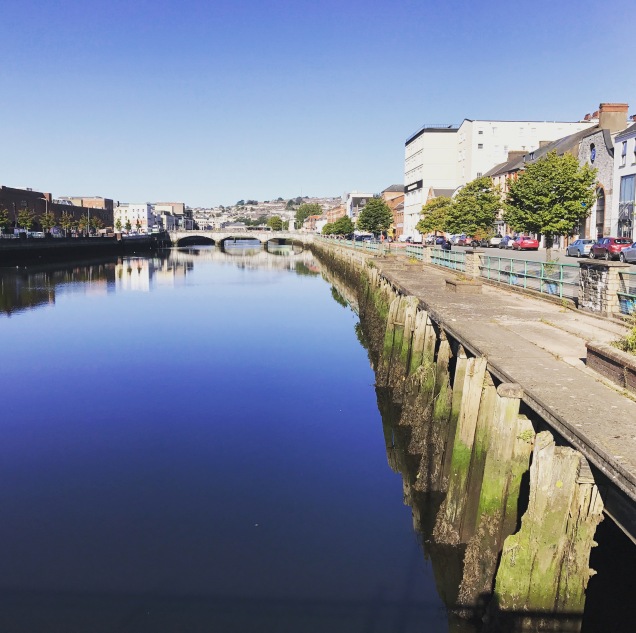
Does technology do it?
There can be a place for interventions in a rounded treatment programme for CRPS. However, like drugs, they do not give the individual the opportunity to learn about and transform their pain. Instead it is an attempt to change the symptoms without addressing the reasons. In other words, a short term, possible fix. It is understandable why someone would go for that option. The responsible clinician will ensure that the person continues to work upon their practices together with the interventions and drugs. ‘Is this what really happens?’ is the question.
Technology is advancing all the time and hence in society is perhaps an implicit expectation that a ‘machine’ will solve the problem. Clearly interventions have not solved this problem, the numbers of sufferers are ever-climbing. I am not sure that they ever will be more than an occasional contributor because the only way a person can really create a meaningful life is by doing just that.
You get back to living by living, not waiting for something to happen or for someone to do something to you. There maybe parameters to work to and practices to practice, but engaging with what you expect of you and your life is the way to gain success. Drugs and interventions may be useful along the way, but not as the main thrust. To offer such a way forward is not giving the person the opportunity to reach their full potential.
To offer drugs and interventions as the way forward is not giving the person the opportunity to reach their full potential. Only by understanding their pain will the person see their own potential to get better
We should be keeping an eye on the balance of funding for research. Is there the necessary funding for study of the condition versus funding for possible interventions and technology? Who is providing the funding? This was an interesting and relevant observation from one of the speakers.
What about the immune system?
The mid-morning session was of interest to me. I find the immune system fascinating as one of the important systems that play a role in protecting us. What goes on in the immune system in CRPS? Are we seeing an over-inflammatory response in people who suffer the condition? How have they been primed and how has their neuroimmune system learned to protect and heal over the years? Dr Andreas Goebel and Professor Frank Birklein delivered very good scientific talks on the topic, offering their insights into the relevance (see links to articles below).
“So what?”
There is a search for sub-types so that treatment can be tailored for these categories. The question is whether we can ever reduce the immeasurable number of variables that constitutes an individual with their unique story into a sub-type? Whilst studying the microbiology of inflammation in CRPS may deliver some important insights into parts of the condition, we must maintain a picture of the whole and remember the person. Chemicals, receptors, signalling pathways are all fascinating (I do love looking at them) but the patient can rightly say: ‘so what?’. There must always be relevance for the person: “What does this mean for me?”.
So what is the relevance? If we can understand these pathways and the role of inflammation, develop ways of determining their influence and how this manifests as the lived experience, we could possibly develop pharmacological treatments that help. Again, this does not replace the need for the person to learn about and transform their lived experience but it could help. It appears we have a long way to go. Additionally, is the fact that any agent that has an effect upon the immune system is likely to have other effects, often unwanted. Chatting to a rheumatologist, she made it very clear that extreme caution is needed in using an ‘auto-immune’ approach to treat CRPS because of the possible side-effects.
Here are some of the studies that are relevant and were referred to:
Complex regional pain syndrome: An optimistic perspective https://www.ncbi.nlm.nih.gov/pubmed/25471395
Inflammation in cold complex regional pain syndrome https://www.ncbi.nlm.nih.gov/pubmed/25598133
CRPS: evidence for warm & cold subtypes in large prospective clinical sample https://www.ncbi.nlm.nih.gov/pubmed/27023422
A prospective, multisite, international validation of the CRPS Severity Score https://www.ncbi.nlm.nih.gov/pubmed/28715350
Association of catastrophizing with interleukin-6 responses to acute pain ~ https://www.ncbi.nlm.nih.gov/m/pubmed/18778895/
Cutaneous immunopathology of long-standing complex regional pain syndrome https://www.ncbi.nlm.nih.gov/pubmed/25728589
Treatment of Longstanding Complex Regional Pain Syndrome with Oral Steroids https://www.ncbi.nlm.nih.gov/pubmed/26814238
Genome-Wide Expression Profiling of Complex Regional Pain Syndrome
Local anaesthetic sympathetic blockade for complex regional pain syndrome https://www.ncbi.nlm.nih.gov/pubmed/27467116
Increased prevalence of posttraumatic stress disorder in CRPS https://www.ncbi.nlm.nih.gov/pubmed/27650922
Autoimmunity contributes to nociceptive sensitization in a mouse model of CRPS https://www.ncbi.nlm.nih.gov/pubmed/25218828
The posters presentations were punchy, which is exactly right. It is a skill in itself to keep to your allocated time, allowing all speakers to tell the audience about their work. With the advent of TED talks and this becoming the accepted way of presenting your point, it keeps the delegates on their toes and fresh for the information.
Janet Bultitude won the poster competition for her work on the spatial elements of CRPS.
The afternoon was completed with a discussion about amputation and whether this should be a treatment option for people with resistant CRPS. This could have been a highly emotive subject but in fact there was a very sensible and reasoned conversation. Examples were given when amputation was necessary, e.g. when the limb was gangrenous, including Victoria Abbot-Fleming from Burning Nights giving an account from her perspective as a double amputee. Just as Day 1 was rounded off with real experiences, this was true of the second.
With final comments and thanks from Dr Dominic Hegarty, the feel was certainly one of achievement. The conference met its expectations in the main, drawing an international crowd, a host of top names and talks that covered the ground. For me though, there was a missing ingredient: the actual people whom we have been discussing, those suffering CRPS. This is a consistent omission at conferences and one that I feel misses a great opportunity for important conversations.

At the SIP 2017 conference in Malta there was equal participation in all areas, including the working groups, by all delegates: patients, patient representatives, clinicians, policy makers, MEPs, scientists and charities. All contributed meaningfully so that the complete story was told with equal contribution. Opportunities and possibilities resulted in positive work being done at the conference, rolling onto action in Europe. Sadly, on return to the UK there was no change. No-one I spoke to had even heard of SIP let alone the work. We are embarrassingly behind.
Change is inevitable, but which way?
Undoubtedly, there is positive work being done in the UK but is it fragmented. Despite having organisations such at the British Pain Society and the Pain Coalition, again most people have never heard of them and have no idea what they do. When I say people, I mean those that need those organisations to function: patients and their families. There is little point in having societies and working groups if the beneficiaries are not receiving answers to their ‘so what?’. This must change. The change will occur in society and has started. This is the reason for UP, to drive such social change because this is where the problem of pain is embedded.
Returning to CRPS, one of the distinct points to come from the conference is indeed the complexity. With different research groups looking at different elements, of course we must draw it together to explain the 1st person experience: pain, altered body sense, altered perception, altered emotions, altered cognition, altered movement, sensitivity, the ‘what it is like to have this’, what it is like to look at my limb that is part of me but does not feel it and much more. In 2011 I wrote a blog entitled ‘It feels weird‘, one of the features of CRPS that is often described to me by patients. Frequently they would tell me that no-one had listened to this before and hence they were nervous about telling me until they understood that I wanted to hear about it!
We are complex. As I have already said elsewhere, there are innumerable variables that make each moment unique and within that our experience is unique and we are unique. You cannot wholly control for that reality. However, I believe that there is great hope and that includes using all of the work we have heard about over the past few days. There was frank honesty about what is known and what works as well as what hasn’t yet. Perhaps the complexity of existing is the reason why and we may not have answers anytime soon. But, and this is a BIG but, that does not mean that people cannot get better. They can, You can. We don’t fully understand consciousness yet but this does not stop us from experiencing and manipulating it. Pain is one of the best examples of a conscious experience together with love, and as we get to grips with this, we will understand pain more and more.
People can get better
Pain is one of the defining features of CRPS. To understand pain means that the person realises and actualise their potential. Pain is characteristic of the person and hence unique to them. To change pain, which we can, we have to change, which we can. Each person has great potential that is often untapped. We have opportunities and possibilities when we are open, learn and use practices to steer ourselves onward in a chosen direction. We begin by asking ourselves ‘what do I want?’. The answer to this is not ‘I don’t want pain’. Think about what you want, not what you don’t want. This is the beginning.
I would love to know how CRPS Cork will inform practice as from the following Monday morning. It is unlikely we will ever really know, but this is the real measure of success. How will this conference have an impact upon society and the people suffering CRPS? Now that would be an interesting question to answer.
Onwards.
